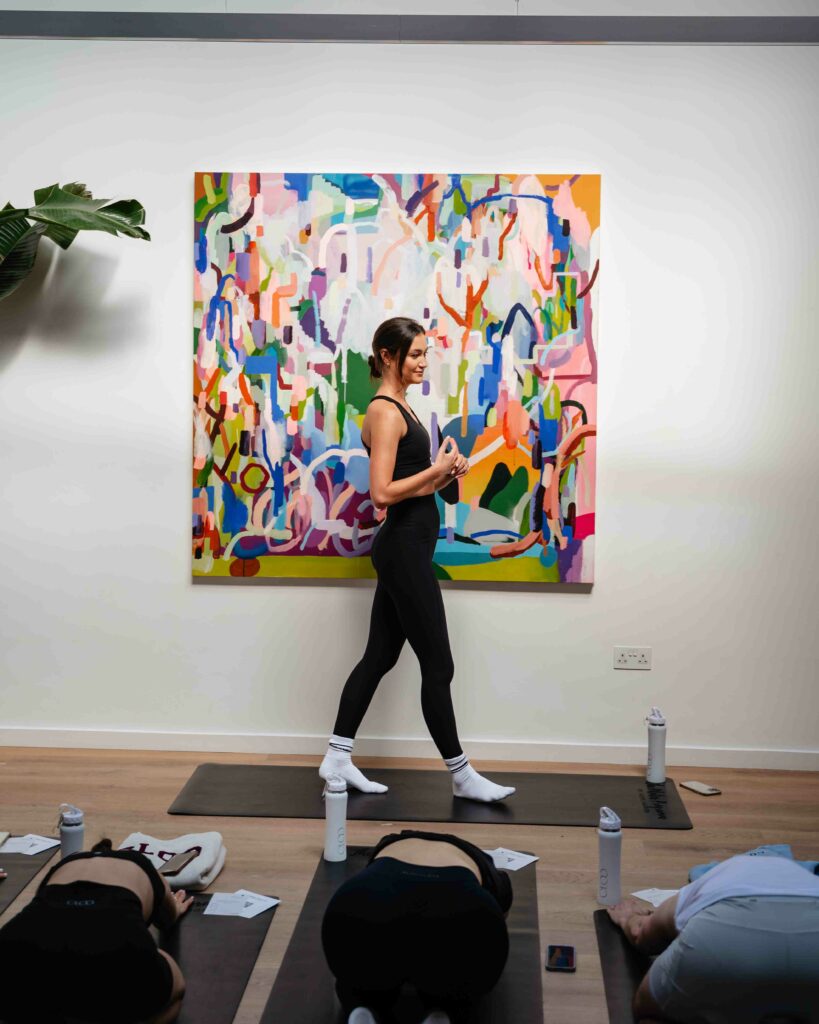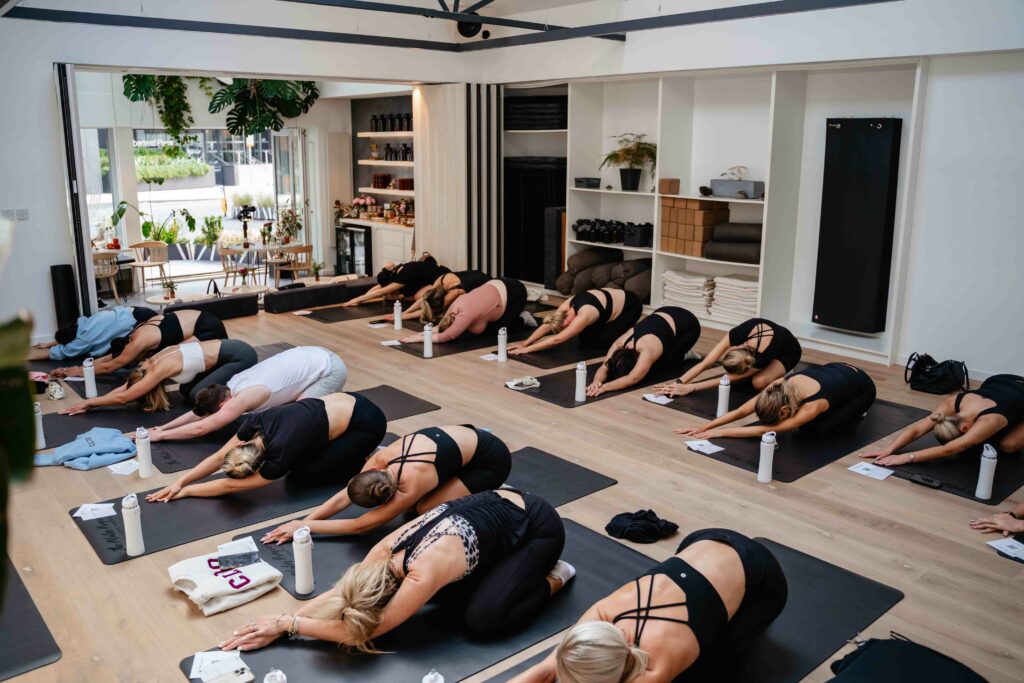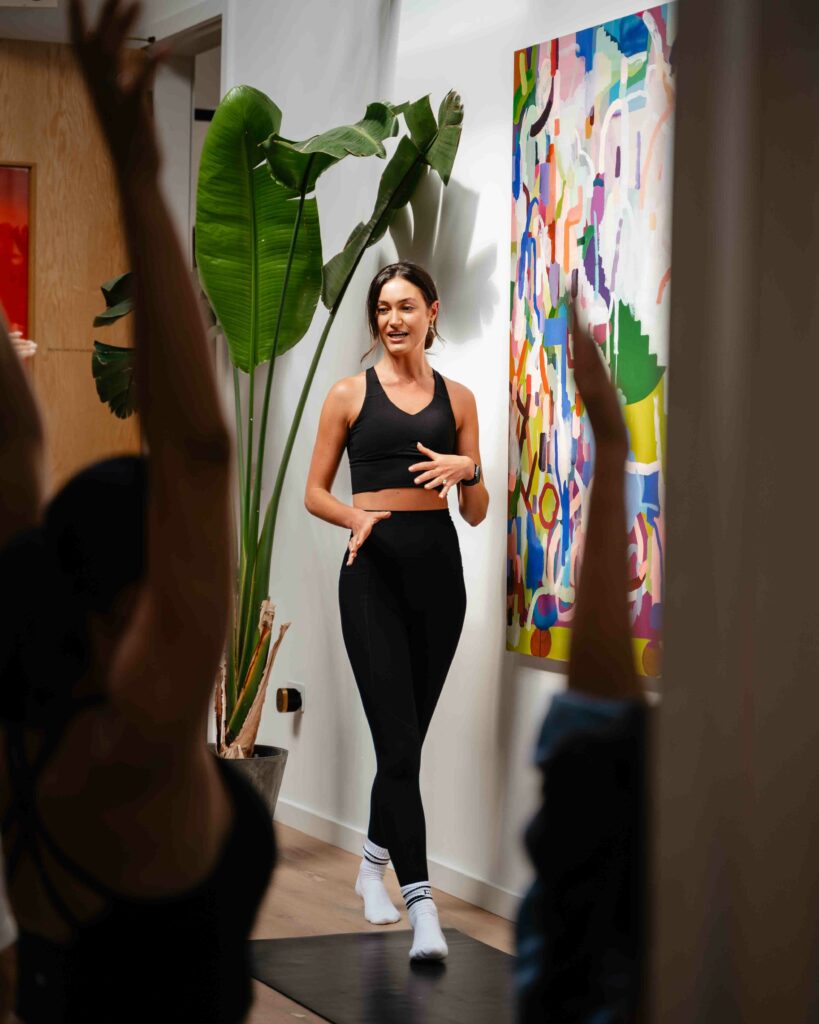How I Became A Pilates Instructor
19 Oct 2025
One of the most frequently asked questions I get is how I became a Pilates instructor. So, I’ve decided to share the whole story with you of exactly how the idea came about, what courses I’ve done, my Physiotherapy career (as I feel they go side by side), what has helped me to develop my skills as a Pilates instructor (this is ongoing of course) and what tips I would give to you if this is something you would like to pursue.
I want to caveat this by acknowledging that I am still just an instructor, on an ongoing journey to better my own teaching every day. I am always trying to learn and improve in any way that I can. I’m sharing my journey and these tips with you to try and help inspire you, not from a standpoint of “being an expert” or “having it all figured out”. So, I hope this helps you in some way or at the very least, makes for an interesting read.
The Backstory
I would love to be able to say that Pilates has been on my radar for years and years and have some deep and meaningful story of how I got into it initially, but it’s far from that I’m afraid. Over 11 years ago, my now husband, suggested I do a Pilates course. I had never even tried a Pilates class at this time and it’s not something I had really considered.
Brendan had being doing Pilates as part of his hurling training and was really impressed with the benefits of it. He was managing a gym at the time and thought that there would be a good opportunity for me to teach Pilates classes there (he’s very entrepreneurial).
This really aligned with what I was doing, as I was in my final year of a Sports Science Degree and I knew that I wanted to go on and study a Masters in Physiotherapy. Becoming a Pilates instructor appealed to me for two reasons back then. 1. I knew it would complement my work as a Physiotherapist and 2. I was trying to self-fund my Masters and thought that teaching Pilates in the evenings after college could be a good way to help me with that.
Of course, as a student, I didn’t have the means to pay for a Pilates course and get the insurance, mats etc I needed to begin teaching for myself. Brendan was working and established in his career as a teacher, while also managing a gym, so he offered to pay for my course. At the time I remember jokingly saying to him “this is the best investment you will ever make”. It’s funny thinking back on this now that we both work full time together on TPP!
The First Course I Did
I began researching Pilates courses and at the time, there wasn’t near as many options available as there is now. Pilates 11 years ago was not remotely as “trendy” or “popular”. I ended up choosing a course that was on within a few weeks, as I was really keen to get started. The course was with PTTI in Dublin. The instructor, Susan Church, was incredibly passionate about Pilates and taught the course from a very classical standpoint. She went through the classical repertoire and I was really inspired by her knowledge. Overall, it was a good course and it gave me the start that I needed.
As part of my qualification from PTTI, I then had to do a number of 1:1 sessions with another Pilates instructor and get them signed off. I found an amazing instructor in Limerick, Leah Harte. Leah was such a great teacher to learn from with these sessions and she really helped me improve my own practice and inspired me with her knowledge and passion. The instructors you meet along the way really help mould you.
Starting Out Pilates Teaching

Once I received my qualification, it was time to begin teaching. This is possibly the most nerve-racking part of starting your work as a Pilates instructor. I had the use of a studio space in the gym Brendan was managing. I advertised my classes, probably on Facebook at the time, and just hoped that a few people would show up. I think for the first number of weeks or even months, I had 3, 4 or 5 people attend. I was usually related to a couple of them!
After a number of months passed, my numbers started to grow, along with my confidence in my own teaching. Within a year, I was teaching 4 classes each week in the gym and filling them with 12 people in each. From that point, I never really had to advertise. I had the same community of people attending all of the time and I grew really close with them. Having the same core group attend your classes all the time challenges you in the best way. You have to keep your classes fresh and keep introducing new moves so that your members don’t get bored. Along with that, you also have to keep some level of familiarity in the classes so that people’s confidence grows in their own ability. People like to feel they are getting to know the moves and getting stronger. Doing some of the same sequences helps with that. So, striking a balance between the two is something I always strived to do and I think that approach worked well.
I charged people for a block of classes and these 4 classes each week funded my Masters in Physiotherapy. It was a tough couple of years as my classes were in Tipperary but my work placements (which were months at a time), were in Galway, Kilkenny and Limerick. There was a lot of travel but it definitely taught me a lot about working hard.
My Physiotherapy Career Overview & Pursuing Further Pilates Training
Once I qualified as a Physiotherapist, I spent 6-months working in a private clinic. I then began working with the HSE in the University Hospital Limerick. Here, I did what are called “rotations”, where you spend 6-months working in a particular area. This is to help develop your skills before you specialise. After two years in Limerick, I secured a permanent post closer to home, in the Hospital of the Assumption in Thurles. I spent nearly two years there, before I began working in TPP full time.
I always had a long-term goal of working in the area of Women’s Health and continuing my Pilates alongside of that. My passion for Pilates was growing, but I always felt like it wasn’t a career option for me. But I was happy knowing that I could teach it “on the side” and get my fill of it that way.
I knew that a good move from a career standpoint would be to study another, more clinical based Pilates Teacher Training course. APPI are a Pilates Teacher Training Company that are well recognised in the Physiotherapy world, so I felt they would be a good option to further my training. I did their Level 1 course and then did the Pre/Postnatal Training Programme. I found their course really helpful. It’s very clinical which is great if you are doing your training to compliment your work as a Physiotherapist.
Transitioning Online
Fast forward a couple of years to when Covid-19 hit and we went into lockdown. I had to stop my in-person classes, which I had been running for a good few years at this point. Cue Brendan and his entrepreneurial business mind once again, who encouraged me to transition online and use this opportunity to teach to a wider audience. I began teaching my usual community of members on Zoom, but I also advertised on Instagram. Very quickly I had over 500 people signed up to classes live on Zoom. This was an incredibly busy time as we were essentially running an online business, without a website. Bookings, payments, emails; it was all manual. We both had our full-time jobs to keep going alongside this, so it was challenging. We were the opposite of most people who had some downtime during Covid!
I won’t go into the details of developing TPP, as that’s a whole separate Blog post, but the short version is that we began working on a website and an online platform and after 6 months of teaching classes on Zoom, we officially launched The Pilates Programme.
Going online was never part of a long term plan. It was a response to the lockdown, which proved to be such an opportunity for us. At the time, we didn’t know what the future held for us and whether we would have a business after Covid, so I continued my work as a Physiotherapist. It wasn’t until TPP was 3 years old that we felt confident enough in the business and it’s future, so I made the decision to work in it full-time. 12 months after this, Brendan also transitioned to just working on TPP and managing his fitness studio in Borrisoleigh.
Continuing The Learning

While working as a Physiotherapist and Pilates instructor, I always took every opportunity to try different classes. Each year I try to plan trips away to London or NYC or even spend a day in Dublin to try out different classes with different instructors. Doing classes with others is not only important for your own practice, but it’s such a great source of inspiration and learning. Even if you do a class that you don’t enjoy and the instructor did X, Y & Z that you don’t particularity like, there is still valuable learning in that. Sometimes, I find I learn as much about what I don’t like as about what I do like and that’s still really valuable learning.
It’s also challenging as an instructor to keep things fresh. In order to stay inspired, I really need these opportunities to try different classes. If I spend a few days away trying other styles of classes with different instructors, I come home ready to dive into filming again with lots of new ideas. I think it’s so important to take this time to fill your own cup.
With so many Pilates platforms now available online, I always dip in and out of other classes. Again, this is such a great form of learning and inspiration. I get a feel for what I like, what I don’t like and use that to inspire my own classes and my own teaching.
I think the challenge in learning from others lies in developing and staying true to your own teaching style. When we start out, we are so heavily influenced by those who provide us with our training and it’s hard not to mimic what they do initially. That’s why I really believe that exposing yourself to as many different instructors and different styles of Pilates classes is really important. That way, you get a feel for what you truly love and you are able to develop and refine it to make it yours.
I’ll be honest, my love of Pilates didn’t come immediately after doing my first course. It was really a couple of years into my teaching and when I went online, I really fell in love with the practice. I think going online allowed me to teach exactly the way I wanted to teach. I could develop different styles of classes for the platform and move away from the classical repertoire and add a more contemporary style; like you’ll find in our Sculpt and Strength style classes. When you teach in person, you teach to the people in front of you, so you can be a bit more restricted. But being online gave me a freedom to really tap into what I liked and my love of the practice grew 10-fold!
So, here we are almost 5 years on from founding TPP. I view where we are now as the early stages of our TPP journey. We have big ambitions for the brand and we want to keep working hard to continue to add more value to the platform. What motivates both Brendan and I is seeing and hearing about the impact our classes have had on people’s lives over the last number of years and we really hope that we can continue to have a positive impact going forward. We are both incredibly passionate about how Pilates can enhance your life and being able to make it accessible for people to access high quality, Physiotherapy led classes at home and at their convenience is what we endeavour to do.
I want to finish this blog with some tips that I hope might be helpful for some of you who are interested in Pilates Teacher Training.
My Top Tips For Instructors
- Choose a course that provides a comprehensive background in anatomy and is more on the Classical Pilates side. Think about your goal as an instructor and ensure the course you choose aligns with that. For example, if you want to work as a Pilates instructor in a Physiotherapy practice, a more clinical based course like APPI might be a better option.
- Once you get your Pilates qualification, find a really good instructor and do some 1:1’s to develop your own practice (this may be part of your qualification, like it was for me). You cannot teach moves that you are not able to execute well yourself.
- Do as many different classes with as many different instructors as you can, both in person and online. This will help you to develop your own style.
- Start teaching. Teach your partner, your friends, your family. Just begin. It’s hard, but it gets so much easier. Your confidence will only improve by teaching.
- Get into the habit of teaching using your voice instead of your body. This is really tough initially, but it’s the best way to help you to develop your cueing. I really believe that it’s our ability to cue well that separates good instructors from great ones. Another important point here is that if you are teaching a lot of in-person classes each week and you are demonstrating your way through every class, your body will suffer over time.
- How you make your clients feel is so important. Your warmth, kindness and encouragement as an instructor can be just as important as your ability to deliver a good class. I always try to remember this. We are nothing without our members, so it’s important we value, encourage and support them.
- Have all of the knowledge and lingo, but try and teach in plain language. Remember, your clients are not instructors and you don’t need to impress them with your knowledge. Talking in a language that they don’t understand can be off putting for them. This is a personal preference as an instructor of course, but I really believe that keeping it simple is better.
- Finally, never stop learning. I am still on a journey and I’m still striving to improve as a teacher. It’s important that we never forget that.


